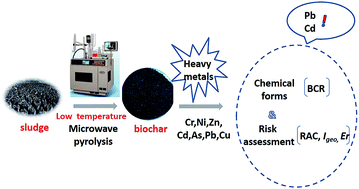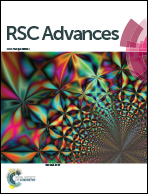Chemical forms and risk assessment of heavy metals in sludge-biochar produced by microwave-induced low temperature pyrolysis
Abstract
Biochar, a stable, carbon-rich solid produced during biomass pyrolysis, has been widely used in soil conditioning. A promising option to alleviate the problem of sludge management. In this study, Cr, Ni, Zn, Cd, As, Pb and Cu were studied owing to their relatively high content in the sludge and their potential to cause environmental damage. Sludge-biochars were produced at different temperatures (300 °C, 350 °C, 400 °C and 450 °C) by microwave pyrolysis. BCR (European Community Bureau of Reference: a sequential extraction) analysis reveals that speciation distribution varied largely with the different heavy metals. Three risk analysis models were adopted to evaluate the risk of heavy metals: the risk assessment code (RAC), geo-accumulation index (Igeo) and potential ecological risk index (Er). The heavy metals risk in the biochar were lower compared with the sludge except for Pb (sludge: 4.3, biochar: 9.4–15.6) as assessed by RAC analysis. The Er result shows that risk from heavy metals decreased except for Cd (sludge: 63.53, biochar: 153.53–189.38). The Igeo model indicated that all seven heavy metals were present at higher levels in biochar than in the sludge. Although the total metal concentration in biochar increased after pyrolysis, this result indicates that heavy metal risk of microwave pyrolysis sludge-biochar should be considered alongside local soil backgrounds and speciation distributions.



 Please wait while we load your content...
Please wait while we load your content...